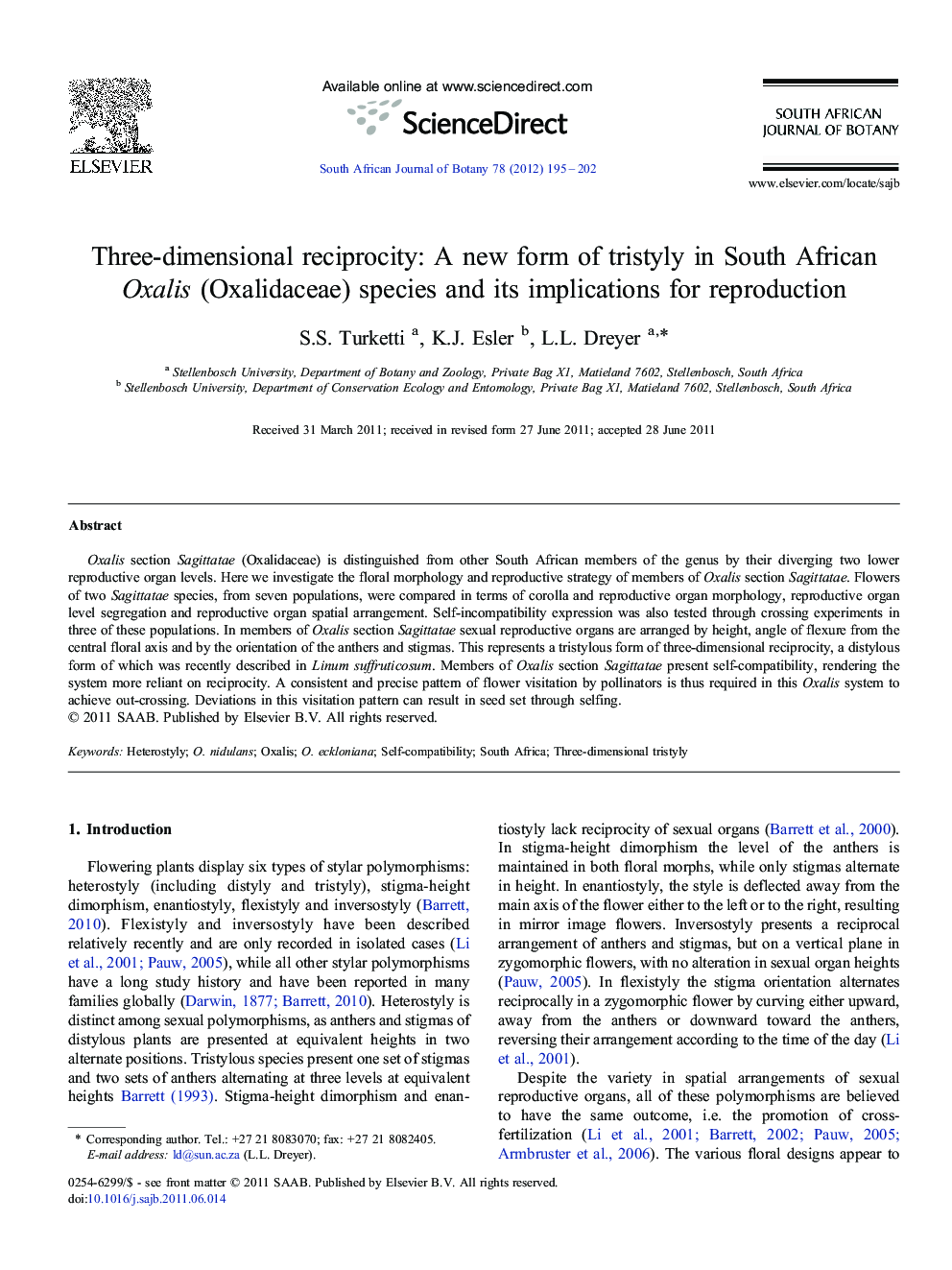| Article ID | Journal | Published Year | Pages | File Type |
|---|---|---|---|---|
| 4521060 | South African Journal of Botany | 2012 | 8 Pages |
Oxalis section Sagittatae (Oxalidaceae) is distinguished from other South African members of the genus by their diverging two lower reproductive organ levels. Here we investigate the floral morphology and reproductive strategy of members of Oxalis section Sagittatae. Flowers of two Sagittatae species, from seven populations, were compared in terms of corolla and reproductive organ morphology, reproductive organ level segregation and reproductive organ spatial arrangement. Self-incompatibility expression was also tested through crossing experiments in three of these populations. In members of Oxalis section Sagittatae sexual reproductive organs are arranged by height, angle of flexure from the central floral axis and by the orientation of the anthers and stigmas. This represents a tristylous form of three-dimensional reciprocity, a distylous form of which was recently described in Linum suffruticosum. Members of Oxalis section Sagittatae present self-compatibility, rendering the system more reliant on reciprocity. A consistent and precise pattern of flower visitation by pollinators is thus required in this Oxalis system to achieve out-crossing. Deviations in this visitation pattern can result in seed set through selfing.
► A new variation of stylar polymorphism, three-dimentional tristyly, is described in the Oxalidaceae. ► This is the only case of this system known among angiosperms. ► Section Sagittatae is distinguished from other South African members of Oxalis (Oxalidaceae). ► The morphological and reproductive expression of this system is presented.
